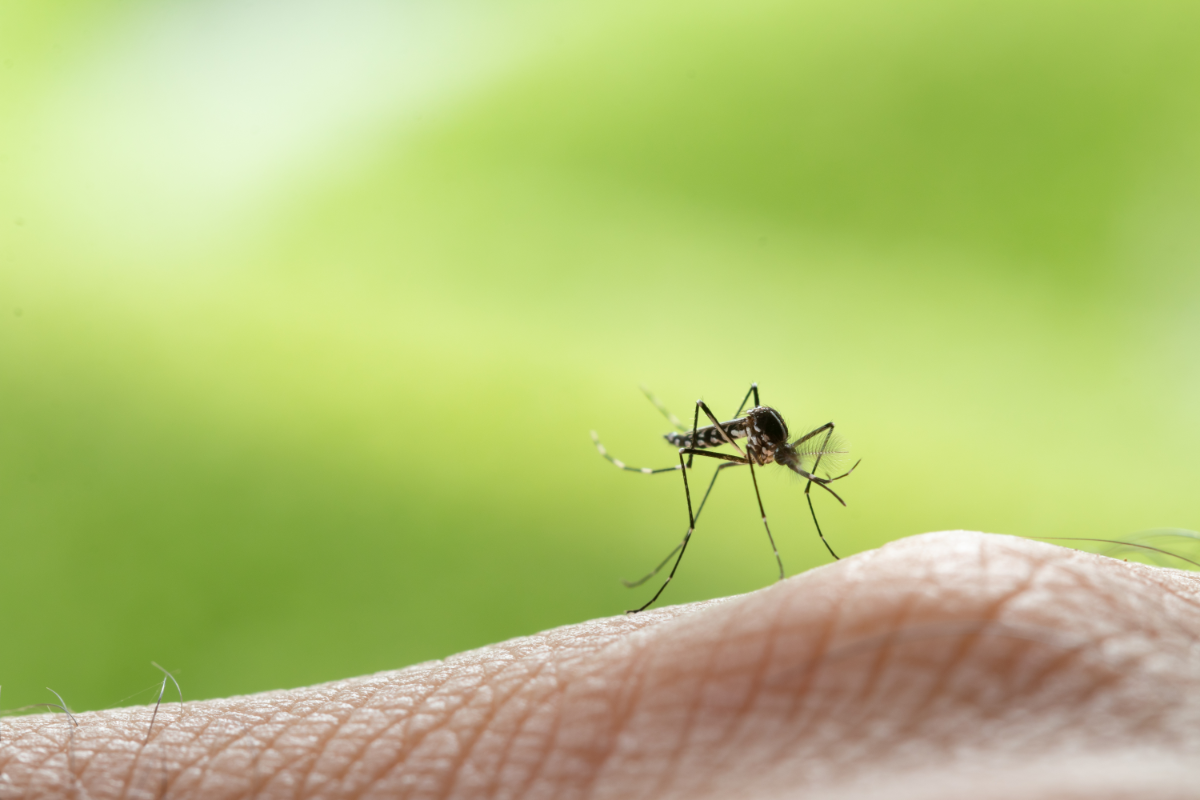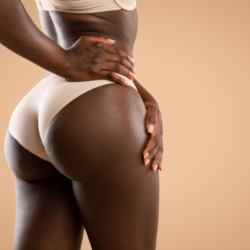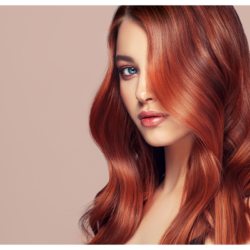The beautiful season is fast approaching, enchanting our days with the triumphant arrival of summer. Spring landscapes enchant us with their delicate floral fragrances and subtle, eye-catching colours. The days grow longer, bringing more light, while our clothes grow shorter, exposing our golden skin to pests. How do we repel these undesirables? The answer lies in hydrolat.
Pelargonium graveolens, also known as Rose Geranium, has an intoxicating scent and is prized for its repellent and antiseptic properties. Pests, attracted by its aroma, are quickly disturbed and move away. The lesson is clear: there’s no need to scratch, just coat well!
Repellent action to ward off mosquitoes; apply pure rose geranium hydrosol to the skin to ward off and protect yourself from mosquito bites. Repeat several times a day. Can also be used on children.
Mosquitoes and their bites
Mosquitoes, small diptera of the Culicidae family, are often perceived as a mere nuisance because of their irritating bites. However, its importance goes far beyond this nuisance. This insect, present in almost every region of the world, plays a major role in ecosystems, but above all in public health. It is the vector of several serious diseases, such as malaria, dengue fever, yellow fever and the West Nile virus. These diseases represent a major challenge for global health, affecting millions of people every year.
What are mosquitoes?
How they bite
In haematophagous species, the blood supply is essential for egg-laying. This process, known as the gonotrophic cycle, is repeated several times in a mosquito’s life, with the duration depending on the species and the outside temperature. Bites are generally nocturnal and last two to three seconds if they are not interrupted.
The adult female bites to extract blood, which is rich in the proteins needed to mature her eggs. She is said to be anautogenic, unlike autogenic females. During the sting, she injects anticoagulant saliva that provokes an allergic reaction in humans.
Mosquitoes have a pair of large compound eyes, enabling them to orientate themselves according to the light. After a blood meal, females regain their sensitivity to light (phototactism), making it easier for them to leave the collection site. Some species have a highly photosensitive retina, which is immediately oriented towards external light after a meal.
Chemotaxis is also crucial for detecting prey. Mosquitoes detect carbon dioxide and fatty acids emitted by human skin. Their visual system, sensitive to light and movement, only comes into play at close range.
As far as their diet is concerned, adult males and females are nectarivores. Females, with the exception of those of the genus Toxorhynchites, also consume blood for the development of their eggs. Mosquito larvae feed mainly on phytoplankton and organic matter suspended in water. Some larvae are predatory, eating other Culicidae larvae.
The female’s proboscis consists of mouthparts that perforate the skin to reach a blood capillary. It has two distinct channels: one for injecting anticoagulant saliva and the other for drawing blood. The amount of blood drawn can be twice the mass of the mosquito.
What complications can arise from a mosquito bite?
The epidemiological and medical importance of mosquitoes is significant. A mosquito bite involves the insertion of styli into the skin, allowing blood to be drawn and anticoagulant saliva to be injected. This action can transfer pathogens to the host. The amount of blood drawn is generally 5 millionths of a litre, and the reaction to the bite varies from indolence to severe allergic reactions.
Mosquitoes are major biological vectors of disease, particularly to animals and humans. They are responsible for the transmission of numerous diseases such as malaria, yellow fever, chikungunya and West Nile virus. Malaria is particularly deadly, affecting between 250 and 600 million people every year and causing over a million deaths.
Mosquitoes also transmit lymphatic filariasis, such as Bancroft’s filariasis, caused by Wuchereria bancrofti. These parasitic diseases affect 120 million people worldwide.
Mosquitoes play a crucial role in the transmission of encephalitis, such as Japanese encephalitis or St Louis encephalitis. These viral diseases are endemic in several regions of the world and can be fatal.
Treatment for bites varies, including antihistamines, devices to quickly calm inflammation, topical corticosteroids, and home remedies such as hot water or cold. These treatments are designed to relieve itching and reduce inflammation.
AIDS is not a mosquito-borne disease, as the AIDS virus cannot reproduce or survive in mosquitoes.
The mosquitoes that carry serious diseases are mainly found in southern countries, but climate change and population movements are encouraging them to spread northwards.
Mosquito control
Rose Geranium hydrosol: an effective mosquito repellent
What are the botanical attributes of geranium?
Pelargonium graveolens, or strong-smelling Pelargonium, belongs to the Geraniaceae family and comes from South Africa. This shrub has a minty scent and has given rise to numerous rose-scented hybrid cultivars known as ” rose geraniums ” or ” Pelargonium rosat group “. The name Pelargonium comes from the Greek word pelargós, meaning stork, which refers to the shape of its fruit. Graveolens is Latin for “strong smell”.
This plant can reach a height of 1.30 m and spread over a width of 1 m. It has pubescent branches that become woody over time. The soft, velvety leaves are deeply lobed and measure around 4 x 6 cm. They contain geraniol and give off a lemony fragrance reminiscent of Damask roses when crumpled.
Inflorescences are in the form of pseudo-doves, with 10 to 15 white to pink flowers. The upper petals, veined with garnet red, are wider than the lower ones. In South Africa, flowering lasts from August to January, with a peak in September-October.
Pelargonium graveolens grows in mountainous areas, often in damp ravines. It is mainly found in two regions of South Africa: Limpopo and the Western Cape. It can also be found in Zimbabwe and Mozambique.
Pelargonium is a bushy, aromatic perennial whose trunk becomes lignified over time. The fruit, characteristic of the Pelargonium genus, resembles a long stork or crane “beak” and contains five fused carpels, each containing a seed.
What are its properties?
Geranium hydrosol is an effective repellent against mosquitoes and other insects. The citronnellol and geraniol in its formula give it this powerful insect repellent action. By applying this floral water to the skin or clothing, it actively repels these pests. This makes its external use a major asset when out and about in the open air or in insect-infested areas.
In addition to its role as an insect repellent, Geranium hydrosol has other notable benefits. It acts as a powerful drainer, stimulating the liver and pancreas and helping to purify the body. This action is all the more beneficial for people suffering from diabetes thanks to its hypoglycaemic effect. As an anti-inflammatory, it is effective in relieving skin inflammations such as rashes and hives, as well as internal inflammations.
Its calming effect is ideal for creating a relaxing atmosphere, whether in the bath, sprayed on the body or in the environment. What’s more, its haemostatic and slightly healing properties are useful for treating wounds and cuts. Finally, by stimulating blood circulation, Geranium Bourbon hydrosol can help combat varicose veins, heavy legs and haemorrhoids.
Chemical analysis using gas chromatography-mass spectrometry (GCMS) revealed that the hydrosol contains mainly geraniol (28%), 2,6-dimethyl decane (21%) and linalool (8.7%). These predominantly alcoholic components give Geranium hydrosol its unique properties, with volatile and water-soluble compounds specific to this product.
What precautions should I take when using this product?
Certain precautions must be taken when using the hydrolat. For internal use, it is not recommended during the first three months of pregnancy. In addition, there is a risk of topical allergy due to the presence of components such as citronellol, geraniol, linalool, citrals and limonene. For optimum storage, we recommend keeping the hydrosol in the refrigerator after opening and using it within two months of opening.
For safe and effective internal use, hydrolats can be taken as a tablespoonful in a glass of water, once or twice a day. However, it is important to wait 10 to 15 minutes after ingestion to avoid any risk of indigestion. This precaution ensures that the product is better tolerated and more effective.
Its fine, sweet, floral fragrance is a real treat… and keeps mosquitoes away in particular! It’s also a purifying, toning and soothing treatment, ideal for damaged or tight skin, as well as for reviving the skin’s radiance.
Sources
- https://fr.wikipedia.org/wiki/Moustique
- https://www.auvergne-rhone-alpes.ars.sante.fr/moustique-tigre-ce-quil-faut-savoir-sur-lui
- https://www.anses.fr/fr/content/le-moustique-tigre
- https://www.mnhn.fr/fr/geranium-rosat
- https://fr.wikipedia.org/wiki/Pelargonium_graveolens







